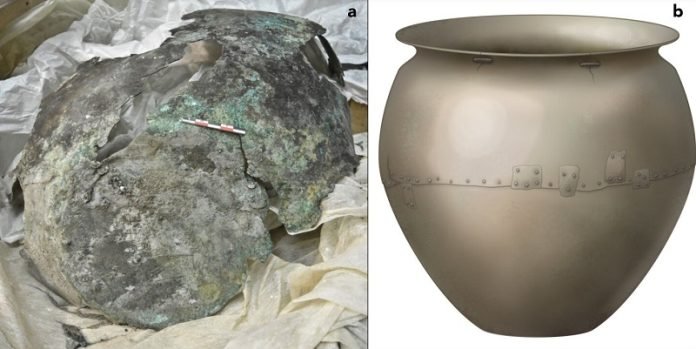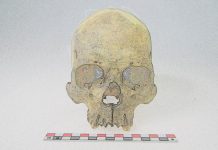
Ever wondered what people ate thousands of years ago? Well, scientists have just found some cool clues in really old cooking pots!
A group of researchers looked at ancient metal cauldrons from a time period called the Maykop period, which was about 5,000 years ago.
These cauldrons were found in the Caucasus region, an area that today includes countries like Russia, Georgia, Azerbaijan, and Armenia.
The scientists were able to figure out that people back then ate deer, sheep, goats, and even cows! How did they find this out?
They looked for leftover bits of food, specifically proteins, stuck to these old pots. Proteins can tell us a lot about what kinds of food were cooked.
The metal of the cauldrons actually helped keep these proteins safe for so long because metals can fight off microbes that usually break things down.
Up until now, we’ve only had guesses about what ancient people might have eaten. Scientists have looked at things like old pottery and even teeth to get some idea.
But this new study is the first to give us clear details about actual meals cooked in these cauldrons.
The researchers even think that these pots were used to make big meals, not just for one family but maybe for a whole bunch of people!
Besides meat, the researchers also found traces of milk proteins. This means that they probably cooked dairy meals too.
So, people of that time weren’t just hunters but also kept animals like sheep and goats for milk.
The scientists used a dating method to find out when these cauldrons were used. Turns out, they were active around 3,520 to 3,350 BCE. That makes these pots older than any other cooking pots studied before by more than 3,000 years!
These cauldrons were also pretty special and not something everyone had. They found signs that the pots had been fixed many times, which means they were valuable items.
Maybe owning a cauldron was a big deal, a sign that you were someone important in the community.
The scientists want to do more studies like this. They’re curious about what other foods might have been cooked and how cooking styles could be different in other places or times.
This is a big deal because the food we eat is a big part of who we are. Knowing what people ate long ago can help us understand their lives and cultures better.
The researchers are really excited about what they’ve found so far. They think this way of looking at proteins could also be used on other old items, not just cauldrons.
So, we might soon know even more about the daily lives of people from thousands of years ago. Isn’t that cool?
Follow us on Twitter for more articles about this topic.
Source: Cell Press.



